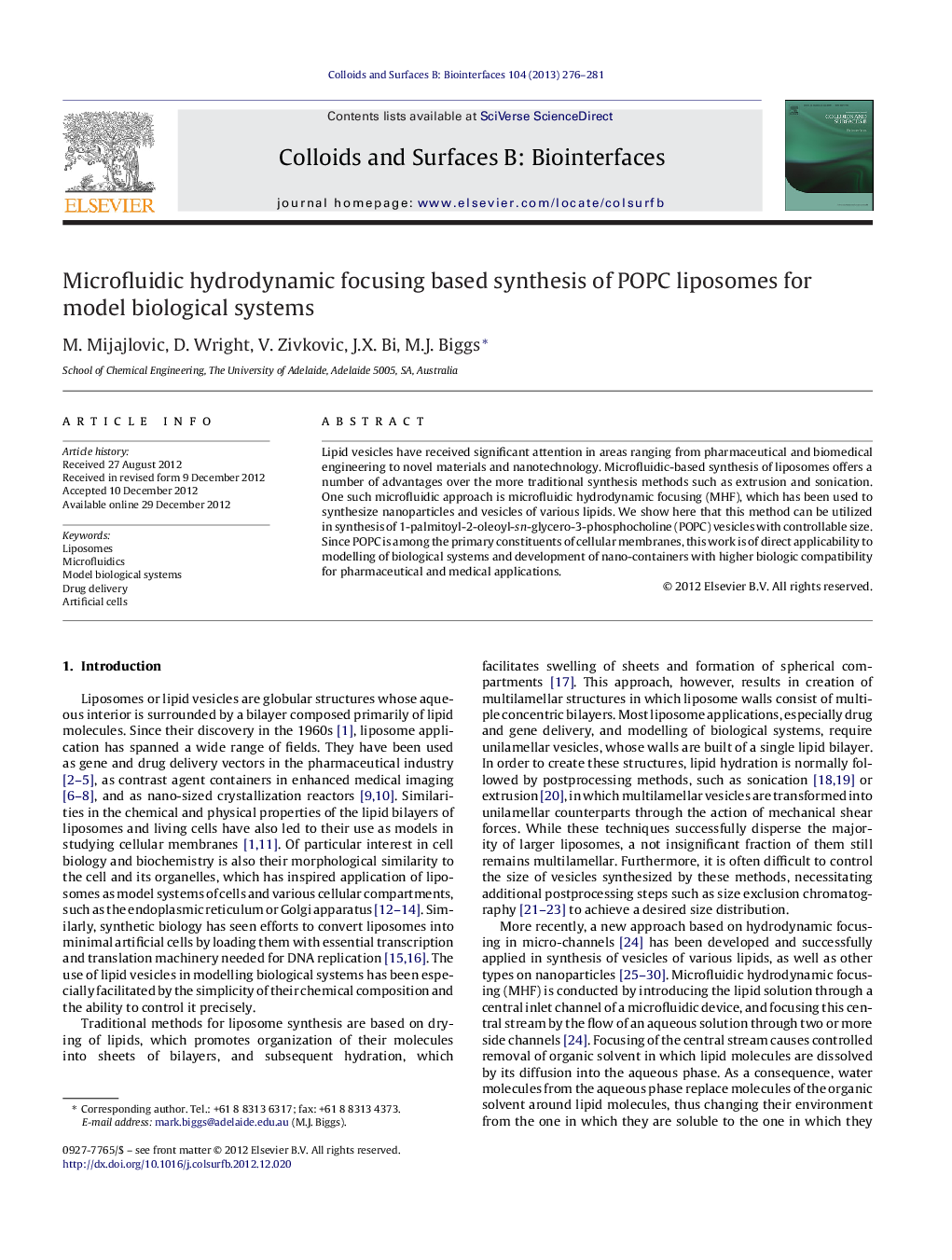| Article ID | Journal | Published Year | Pages | File Type |
|---|---|---|---|---|
| 600058 | Colloids and Surfaces B: Biointerfaces | 2013 | 6 Pages |
Lipid vesicles have received significant attention in areas ranging from pharmaceutical and biomedical engineering to novel materials and nanotechnology. Microfluidic-based synthesis of liposomes offers a number of advantages over the more traditional synthesis methods such as extrusion and sonication. One such microfluidic approach is microfluidic hydrodynamic focusing (MHF), which has been used to synthesize nanoparticles and vesicles of various lipids. We show here that this method can be utilized in synthesis of 1-palmitoyl-2-oleoyl-sn-glycero-3-phosphocholine (POPC) vesicles with controllable size. Since POPC is among the primary constituents of cellular membranes, this work is of direct applicability to modelling of biological systems and development of nano-containers with higher biologic compatibility for pharmaceutical and medical applications.
Graphical abstractFigure optionsDownload full-size imageDownload as PowerPoint slideHighlights► Microfluidic hydrodynamic focusing (MHF) was used to synthesize POPC vesicles. ► Characteristics of POPC vesicles were similar to those composed of related molecules. ► POPC liposomes are good candidates for biological and medical applications. ► MHF approach extended to modelling of biological systems.
